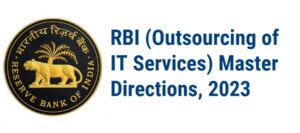Page Contents
What is Winding-up?
Winding-up is the process that brings a company’s operations to an end, collects and realizes its assets, pays off debts, and returns the remaining amount to its members the sums which they have contributed to the company in accordance with the Articles of the company.
Process for Voluntary Winding Up Simplified:
The winding up process under the earlier provisions requires:
- The Company to make a winding up petition before the NCLT in Form WIN-1 or form WIN-2. Such a petition shall be verified by an affidavit made by the petitioner in Form WIN-3. Three copies of the petition have to be presented to the tribunal.
- The statement of affairs shall be in Form WIN 4 and shall contain information updated shall less than 30 days prior to the date of filing the petition. Two copies of the statement of affairs shall be prepared.
- Along with the statement of affairs, an affidavit of the concurrence of the statement of affairs has to be filed in Form WIN 5.
- After filing the petition for winding up, it shall be posted before the Tribunal for its admission, upon which a date for the hearing of petition shall be fixed.
- Upon hearing of the petition, the Tribunal will give appropriate directions for the advertisement of winding up to be published. The petitioner shall bear all the costs involved in the advertisement of winding up the company.
- A copy of the petition for winding up the company has to be served to every contributory of the company. This copy of the petition has to be furnished within 24 hours of the notice for the same
- Within 14 days of receiving the date of hearing of the petition, the notice of the petition shall be advertised in any daily english newspaper and a vernacular language (local) newspaper, which is broadly circulated in the State/UT where the registered office of the company is located and advertisement shall be in Form WIN 6.
Fast Track Model for Startups:
In order to streamline the process and align it with global practices, the Department of Industrial Policy and Promotion (“DIPP”) has proposed a fast track model for startups.
To facilitate faster exit for startups, the DIPP has urged the Ministry of Corporate Affairs (MCA) to classify startups as “Fast Track firms.” This means that startups can now wind up their business within 90 days of applying for the process.
Benefits of the Fast Track Winding Up:
The previous lengthy and costly winding up process often discouraged companies from closing down and remain dormant. Many companies remained dormant i.e run the companies on paper, continuing to file tax returns and prepare annual reports despite being non-operational. However, the introduction of the fast track winding-up process by the DIPP has eliminated these challenges.
Now, startups can take advantage of a more efficient and time-effective process for winding up their company. This allows them to complete the closure swiftly, save on unnecessary paperwork, and avoid prolonged expenses.
Conclusion:
The simplified fast track winding-up process for startups has brought relief to entrepreneurs who previously faced a complex and time-consuming closure process. With the DIPP’s initiative, startups can now wind up their business efficiently within a shorter duration. This enables them to focus on new ventures and opportunities without being burdened by the long-drawn process of winding up their previous ventures.
FAQs about Winding Up Startups
Q: What is the process of winding up a startup?
A: The process of winding up a startup involves bringing the operations of the company to an end, collecting and realizing its assets, paying off debts, and returning any remaining amount to the members according to the company’s Articles of Association. It typically involves filing a winding up petition with the National Company Law Tribunal (NCLT), preparing a statement of affairs, and complying with the necessary legal requirements and procedures.
Q: How long does it take to wind up a startup?
A: The duration for winding up a startup can vary depending on various factors such as the complexity of the company’s debts and assets, the efficiency of the process, and the specific provisions applicable in the jurisdiction. However, with the introduction of the fast track model for startups, the process can be completed within 90 days from the application for winding up.
Q: What is the fast track model for winding up startups?
A: The fast track model for winding up startups is an initiative introduced by the
Department of Industrial Policy and Promotion (DIPP) to enable faster closure for startups. Under this model, startups can complete the winding-up process within 90 days of applying for it, streamlining the procedures and reducing the time and costs involved.
Q: Can startups opt for insolvency proceedings for winding up?
A: Yes, startups with simple debt structures can choose to initiate insolvency proceedings for winding up. As per the Insolvency and Bankruptcy Code, 2016, an insolvency professional can be appointed to oversee the liquidation of the company’s assets and the repayment of its creditors within a specific timeframe, typically six months.
Q: What are the benefits of the fast track winding-up process for startups?
A: The fast track winding-up process offers several benefits for startups, including a quicker closure of the business, streamlined asset sale, and efficient repayment of creditors. It reduces the paperwork, costs, and complexities associated with the traditional winding-up process, allowing startups to exit their business swiftly and focus on new opportunities without unnecessary burdens.
Disclaimer:
The content of this article is for information purpose only and does not constitute advice or a legal opinion and are personal views of the author. It is based upon relevant law and/or facts available at that point of time and prepared with due accuracy & reliability. Readers are requested to check and refer to relevant provisions of statute, latest judicial pronouncements, circulars, clarifications etc before acting on the basis of the above write up. The possibility of other views on the subject matter cannot be ruled out. By the use of the said information, you agree that the Author / Treelife is not responsible or liable in any manner for the authenticity, accuracy, completeness, errors or any kind of omissions in this piece of information for any action taken thereof.
Disclaimer:
The content of this article is for information purpose only and does not constitute advice or a legal opinion and are personal views of the author. It is based upon relevant law and/or facts available at that point of time and prepared with due accuracy & reliability. Readers are requested to check and refer to relevant provisions of statute, latest judicial pronouncements, circulars, clarifications etc. before acting on the basis of the above write up. The possibility of other views on the subject matter cannot be ruled out. By the use of the said information, you agree that the Author / Treelife is not responsible or liable in any manner for the authenticity, accuracy, completeness, errors or any kind of omissions in this piece of information for any action taken thereof.









